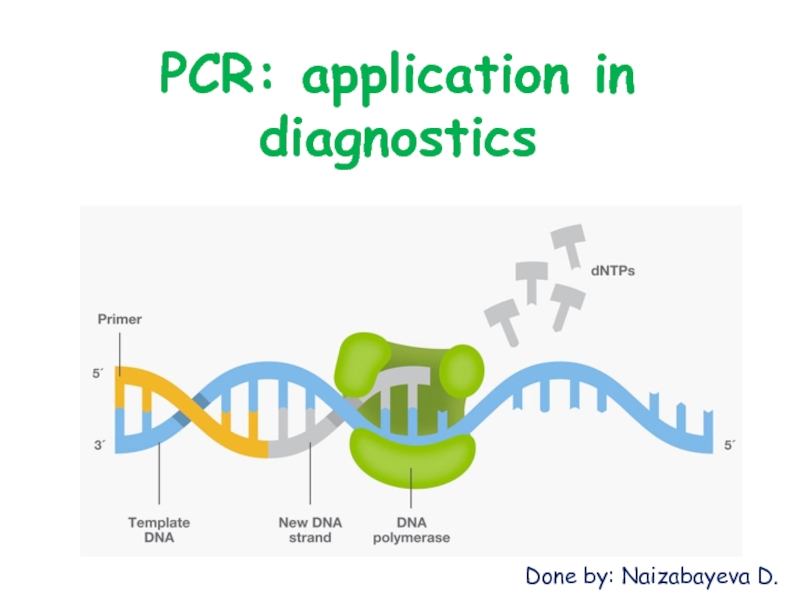to be amplified.
2) Pair of Primers - oligonucleotides that define
the sequence to be amplified.3) dNTPs - deoxynucleotidetriphosphates: DNA building blocks.
4) Thermostable DNA Polymerase - enzyme that catalyzes the reaction
5) Mg2+ ions - cofactor of the enzyme
6) Buffer solution – maintains pH and ionic strength of the reaction solution suitable for the activity of the enzyme





































